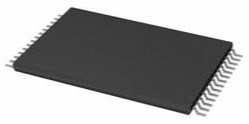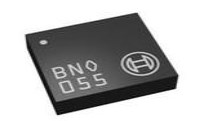BR2032 Battery: Panasonic BR2032, BR2032 vs. CR2032, Datasheet
PANASONIC - BR-2032/BN - BATTERY, LITHIUM, BR2032 190MAH
BR2032 is a 3V lithium battery. This post mainly covers its pinout, datasheet, application, comparison and more details about the BR2032 battery.
BR2032 Description
The BR2032 lithium battery has a positive electrode (cathode) of carbon monofluoride, an organic electrolyte, and a negative electrode of lithium (anode). BR2032 is not as prevalent as CR2032, and the makers who do create them just mark them 'BR2032.'
BR2032 Pinout

BR2032 Pinout
BR2032 CAD Model
Symbol

BR2032 Symbol
Footprint

BR2032 Footprint
BR2032 Feature
The high voltage of 3 volts
Extremely small self-discharge for
Long service and shelf life
Compact and lightweight with extremely
The high energy density per unit weight
Strong load pulse characteristics
BR2032 Application
Computer memory backup
Games and toys
small medical equipment such as home and portable blood pressure monitors
wearable medical monitors such as the Dexcom system for monitoring glucose levels.
Key fob for cars.
Wireless doorbell for the house.
CMOS battery in computers.
Glucometers
Digital thermometers
Digital altimeter
Cyclocomputers
BR2032 Circuit
BR2032 vs. CR2032
The most popular '2032' battery is the CR2032, and its standard label is, of course, CR2032, but many manufacturers also use other labels, such as CR2032BP, DL2032, ECR2032, KCR2032, BR2032, LM2032, 5004LC, 5004LB, L14, SB-T15, EA2032C, EA-2032C, L2032, DJ2032, KL2032, E-CR2032, KECR2032,
The BR2032 battery is a non-rechargeable 3V lithium battery that uses carbon monofluoride as the positive electrode (cathode), an organic electrolyte, and lithium as the negative electrode (anode).
BR2032 is not as prevalent as CR2032, and the makers who do create them just mark them 'BR2032.'
Parts with Similar Specs
Specifications
- TypeParameter
- Factory Lead Time22 Weeks
- Weight2.5g
- Usage LevelCommercial grade
- Series
In electronic components, the "Series" refers to a group of products that share similar characteristics, designs, or functionalities, often produced by the same manufacturer. These components within a series typically have common specifications but may vary in terms of voltage, power, or packaging to meet different application needs. The series name helps identify and differentiate between various product lines within a manufacturer's catalog.
BR2032 - Published2006
- Size / Dimension
In electronic components, the parameter "Size / Dimension" refers to the physical dimensions of the component, such as its length, width, and height. These dimensions are crucial for determining how the component will fit into a circuit or system, as well as for ensuring compatibility with other components and the overall design requirements. The size of a component can also impact its performance characteristics, thermal properties, and overall functionality within a given application. Engineers and designers must carefully consider the size and dimensions of electronic components to ensure proper integration and functionality within their designs.
0.79Dia x 0.13 H 20.0mmx3.2mm - Part Status
Parts can have many statuses as they progress through the configuration, analysis, review, and approval stages.
Active - Moisture Sensitivity Level (MSL)
Moisture Sensitivity Level (MSL) is a standardized rating that indicates the susceptibility of electronic components, particularly semiconductors, to moisture-induced damage during storage and the soldering process, defining the allowable exposure time to ambient conditions before they require special handling or baking to prevent failures
1 (Unlimited) - Termination
Termination in electronic components refers to the practice of matching the impedance of a circuit to prevent signal reflections and ensure maximum power transfer. It involves the use of resistors or other components at the end of transmission lines or connections. Proper termination is crucial in high-frequency applications to maintain signal integrity and reduce noise.
Standard - ECCN Code
An ECCN (Export Control Classification Number) is an alphanumeric code used by the U.S. Bureau of Industry and Security to identify and categorize electronic components and other dual-use items that may require an export license based on their technical characteristics and potential for military use.
3A991.J.1 - Max Operating Temperature
The Maximum Operating Temperature is the maximum body temperature at which the thermistor is designed to operate for extended periods of time with acceptable stability of its electrical characteristics.
80°C - Min Operating Temperature
The "Min Operating Temperature" parameter in electronic components refers to the lowest temperature at which the component is designed to operate effectively and reliably. This parameter is crucial for ensuring the proper functioning and longevity of the component, as operating below this temperature may lead to performance issues or even damage. Manufacturers specify the minimum operating temperature to provide guidance to users on the environmental conditions in which the component can safely operate. It is important to adhere to this parameter to prevent malfunctions and ensure the overall reliability of the electronic system.
-30°C - HTS Code
HTS (Harmonized Tariff Schedule) codes are product classification codes between 8-1 digits. The first six digits are an HS code, and the countries of import assign the subsequent digits to provide additional classification. U.S. HTS codes are 1 digits and are administered by the U.S. International Trade Commission.
8506.80.00.00 - Reach Compliance Code
Reach Compliance Code refers to a designation indicating that electronic components meet the requirements set by the Registration, Evaluation, Authorization, and Restriction of Chemicals (REACH) regulation in the European Union. It signifies that the manufacturer has assessed and managed the chemical substances within the components to ensure safety and environmental protection. This code is vital for compliance with regulations aimed at minimizing risks associated with hazardous substances in electronic products.
not_compliant - Termination Style
"Termination style" in electronic components refers to the method used to connect the component to a circuit board or other electronic devices. It determines how the component's leads or terminals are designed for soldering or mounting onto the circuit board. Common termination styles include through-hole, surface mount, and wire lead terminations.Through-hole components have leads that are inserted through holes in the circuit board and soldered on the other side. Surface mount components have flat terminals that are soldered directly onto the surface of the circuit board. Wire lead terminations involve attaching wires to the component for connection.The choice of termination style depends on factors such as the type of component, the manufacturing process, and the space available on the circuit board. Different termination styles offer various advantages in terms of ease of assembly, reliability, and space efficiency in electronic designs.
Requires Holder - Output Voltage
Output voltage is a crucial parameter in electronic components that refers to the voltage level produced by the component as a result of its operation. It represents the electrical potential difference between the output terminal of the component and a reference point, typically ground. The output voltage is a key factor in determining the performance and functionality of the component, as it dictates the level of voltage that will be delivered to the connected circuit or load. It is often specified in datasheets and technical specifications to ensure compatibility and proper functioning within a given system.
3V - Terminal Type
Terminal type or emulation specifies how your computer and the host computer to which you are connected exchange information.
TAB - Battery Chemistry
A battery is a device that stores chemical energy, and converts it to electricity. This is known as electrochemistry and the system that underpins a battery is called an electrochemical cell. A battery can be made up of one or several (like in Volta's original pile) electrochemical cells.
Lithium Poly-Carbon Monoflouride - Outside Diameter
The outer diameter (OD) of a hollow circular pipe is the measurement of the outside edges of the pipe passing through its center.
20 mm - Battery Cell Size
The most common lithium-ion cell is the 18650 (the numbers define the physical dimensions and shape as follows: 18mm in diameter, 65mm long and the 0 means it has a round cross-section) which is due to its widespread use in laptop battery packs.
Coin 20.0mm - Capacity
In electronic components, "Capacity" typically refers to the maximum amount of electrical charge that a component can store. It is measured in units called farads (F). Capacitors are the most common components that have a capacity rating. The capacity of a capacitor determines how much energy it can store and release when connected in a circuit. Higher capacity capacitors can store more charge and are often used in applications requiring larger energy storage or filtering capabilities. It is important to select a capacitor with the appropriate capacity to ensure proper functioning of the circuit.
190mAh - Discharge Rate
The "Discharge Rate" in electronic components refers to the rate at which a component can release stored energy or power. This parameter is particularly important in devices that use batteries or capacitors, as it determines how quickly these components can discharge their stored energy. A high discharge rate means that the component can release energy quickly, while a low discharge rate indicates a slower release of energy. Understanding the discharge rate of electronic components is crucial for designing circuits and systems that require specific power delivery characteristics.
30μA - Chemistry/Technology
The parameter "Chemistry/Technology" in electronic components refers to the specific materials and manufacturing processes used to create the component. It encompasses the chemical properties of materials such as semiconductors, dielectrics, and conductors, which influence performance characteristics like conductivity, thermal stability, and reliability. This parameter is critical for determining the suitability of components for various applications, including considerations like environmental impact, degradation over time, and compatibility with other materials. Understanding the chemistry and technology behind electronic components is essential for advancing performance and innovation in the field.
Lithium - Battery Type
Battery type refers to the specific chemistry and design of a battery that determines its characteristics, performance, and applications. Common battery types include alkaline, lithium-ion, nickel-metal hydride, and lead-acid, each with unique properties such as voltage, capacity, energy density, and discharge rates. The choice of battery type affects factors such as longevity, rechargeability, and suitability for various electronic devices and systems. Understanding battery type is crucial for selecting the appropriate power source for specific electronic components and applications.
PRIMARY - Diameter
In electronic components, the parameter "Diameter" typically refers to the measurement of the width of a circular component, such as a resistor, capacitor, or inductor. It is a crucial dimension that helps determine the physical size and fit of the component within a circuit or on a circuit board. The diameter is usually measured in millimeters (mm) or inches (in) and is important for ensuring proper placement and soldering of the component during assembly. Understanding the diameter of electronic components is essential for selecting the right size for a specific application and ensuring compatibility with other components and the overall design of the circuit.
20mm - Height3.2mm
- REACH SVHC
The parameter "REACH SVHC" in electronic components refers to the compliance with the Registration, Evaluation, Authorization, and Restriction of Chemicals (REACH) regulation regarding Substances of Very High Concern (SVHC). SVHCs are substances that may have serious effects on human health or the environment, and their use is regulated under REACH to ensure their safe handling and minimize their impact.Manufacturers of electronic components need to declare if their products contain any SVHCs above a certain threshold concentration and provide information on the safe use of these substances. This information allows customers to make informed decisions about the potential risks associated with using the components and take appropriate measures to mitigate any hazards.Ensuring compliance with REACH SVHC requirements is essential for electronics manufacturers to meet regulatory standards, protect human health and the environment, and maintain transparency in their supply chain. It also demonstrates a commitment to sustainability and responsible manufacturing practices in the electronics industry.
Yes - RoHS Status
RoHS means “Restriction of Certain Hazardous Substances” in the “Hazardous Substances Directive” in electrical and electronic equipment.
Non-RoHS Compliant - Lead Free
Lead Free is a term used to describe electronic components that do not contain lead as part of their composition. Lead is a toxic material that can have harmful effects on human health and the environment, so the electronics industry has been moving towards lead-free components to reduce these risks. Lead-free components are typically made using alternative materials such as silver, copper, and tin. Manufacturers must comply with regulations such as the Restriction of Hazardous Substances (RoHS) directive to ensure that their products are lead-free and environmentally friendly.
Lead Free
Datasheet PDF
- Datasheets :
- MSDS Material Safety Datasheet :
What is the cathode of the BR2032 lithium battery?
Carbon monofluoride.
What type of lithium battery can you replace most CR2032 coin cell batteries with?
BR2032.
What is the difference between BR2032 and CR2032?
The primary distinction between these two varieties is found in their electrodes. While similar, the positive electrode in the BR2032 is carbon monofluoride. The positive electrode in the CR2032 is made of manganese dioxide.
 DS17285E-3+ Real Time Clock: Pinout, Equivalent and Datasheet
DS17285E-3+ Real Time Clock: Pinout, Equivalent and Datasheet17 April 2025307
 ICL7107CPLZ A/D Converter: Features, Pinout, and Datasheet
ICL7107CPLZ A/D Converter: Features, Pinout, and Datasheet25 February 20223121
 ESP32S2 WiFi 802.11b/g/n Transceiver Module: Datasheet, Pinout, and Application
ESP32S2 WiFi 802.11b/g/n Transceiver Module: Datasheet, Pinout, and Application13 January 20222103
 ATMEGA1284P Microcontroller: Pinout, Datasheet, ATMEGA1284 vs. ATMEGA1284P
ATMEGA1284P Microcontroller: Pinout, Datasheet, ATMEGA1284 vs. ATMEGA1284P18 November 20214234
 Intel EP1K30TI144-2N FPGA: Features, Pricing, and Selection Guide
Intel EP1K30TI144-2N FPGA: Features, Pricing, and Selection Guide07 June 202565
 BNO055 Orientation Sensor: Datasheet, Pinout and Features
BNO055 Orientation Sensor: Datasheet, Pinout and Features23 July 20216991
 MV104 Diode: Datasheet, Alternatives and Application Circuit
MV104 Diode: Datasheet, Alternatives and Application Circuit23 September 20211101
 TP4056 Standalone Linear Li-Lon Battery Charger: Datasheet, Schematics and Current
TP4056 Standalone Linear Li-Lon Battery Charger: Datasheet, Schematics and Current18 October 202124865
 Next-Generation Flexible Display Technology - QLED
Next-Generation Flexible Display Technology - QLED11 October 20213384
 Power Converter with Inbuilt Charging technology using WBG Devices
Power Converter with Inbuilt Charging technology using WBG Devices18 January 20242099
 What is a Delay Circuit? 6 Types of Delay Circuits Explained
What is a Delay Circuit? 6 Types of Delay Circuits Explained28 March 202547201
 What is a 18650 Lithium Battery?
What is a 18650 Lithium Battery?15 December 20217853
 Image Sensor: How do CCD and CMOS Sensors work?
Image Sensor: How do CCD and CMOS Sensors work?24 October 202511750
 Role of On-Chip Optical Communication in Overcoming CMOS Scaling Challenges
Role of On-Chip Optical Communication in Overcoming CMOS Scaling Challenges22 August 20241907
 Understanding UARTs: The Basics and Benefits of Serial Communication
Understanding UARTs: The Basics and Benefits of Serial Communication06 March 20231508
 The Strongest Introductory Science on Semiconductor Storage
The Strongest Introductory Science on Semiconductor Storage10 October 20222618
Panasonic - BSG
In Stock
United States
China
Canada
Japan
Russia
Germany
United Kingdom
Singapore
Italy
Hong Kong(China)
Taiwan(China)
France
Korea
Mexico
Netherlands
Malaysia
Austria
Spain
Switzerland
Poland
Thailand
Vietnam
India
United Arab Emirates
Afghanistan
Åland Islands
Albania
Algeria
American Samoa
Andorra
Angola
Anguilla
Antigua & Barbuda
Argentina
Armenia
Aruba
Australia
Azerbaijan
Bahamas
Bahrain
Bangladesh
Barbados
Belarus
Belgium
Belize
Benin
Bermuda
Bhutan
Bolivia
Bonaire, Sint Eustatius and Saba
Bosnia & Herzegovina
Botswana
Brazil
British Indian Ocean Territory
British Virgin Islands
Brunei
Bulgaria
Burkina Faso
Burundi
Cabo Verde
Cambodia
Cameroon
Cayman Islands
Central African Republic
Chad
Chile
Christmas Island
Cocos (Keeling) Islands
Colombia
Comoros
Congo
Congo (DRC)
Cook Islands
Costa Rica
Côte d’Ivoire
Croatia
Cuba
Curaçao
Cyprus
Czechia
Denmark
Djibouti
Dominica
Dominican Republic
Ecuador
Egypt
El Salvador
Equatorial Guinea
Eritrea
Estonia
Eswatini
Ethiopia
Falkland Islands
Faroe Islands
Fiji
Finland
French Guiana
French Polynesia
Gabon
Gambia
Georgia
Ghana
Gibraltar
Greece
Greenland
Grenada
Guadeloupe
Guam
Guatemala
Guernsey
Guinea
Guinea-Bissau
Guyana
Haiti
Honduras
Hungary
Iceland
Indonesia
Iran
Iraq
Ireland
Isle of Man
Israel
Jamaica
Jersey
Jordan
Kazakhstan
Kenya
Kiribati
Kosovo
Kuwait
Kyrgyzstan
Laos
Latvia
Lebanon
Lesotho
Liberia
Libya
Liechtenstein
Lithuania
Luxembourg
Macao(China)
Madagascar
Malawi
Maldives
Mali
Malta
Marshall Islands
Martinique
Mauritania
Mauritius
Mayotte
Micronesia
Moldova
Monaco
Mongolia
Montenegro
Montserrat
Morocco
Mozambique
Myanmar
Namibia
Nauru
Nepal
New Caledonia
New Zealand
Nicaragua
Niger
Nigeria
Niue
Norfolk Island
North Korea
North Macedonia
Northern Mariana Islands
Norway
Oman
Pakistan
Palau
Palestinian Authority
Panama
Papua New Guinea
Paraguay
Peru
Philippines
Pitcairn Islands
Portugal
Puerto Rico
Qatar
Réunion
Romania
Rwanda
Samoa
San Marino
São Tomé & Príncipe
Saudi Arabia
Senegal
Serbia
Seychelles
Sierra Leone
Sint Maarten
Slovakia
Slovenia
Solomon Islands
Somalia
South Africa
South Sudan
Sri Lanka
St Helena, Ascension, Tristan da Cunha
St. Barthélemy
St. Kitts & Nevis
St. Lucia
St. Martin
St. Pierre & Miquelon
St. Vincent & Grenadines
Sudan
Suriname
Svalbard & Jan Mayen
Sweden
Syria
Tajikistan
Tanzania
Timor-Leste
Togo
Tokelau
Tonga
Trinidad & Tobago
Tunisia
Turkey
Turkmenistan
Turks & Caicos Islands
Tuvalu
U.S. Outlying Islands
U.S. Virgin Islands
Uganda
Ukraine
Uruguay
Uzbekistan
Vanuatu
Vatican City
Venezuela
Wallis & Futuna
Yemen
Zambia
Zimbabwe






















